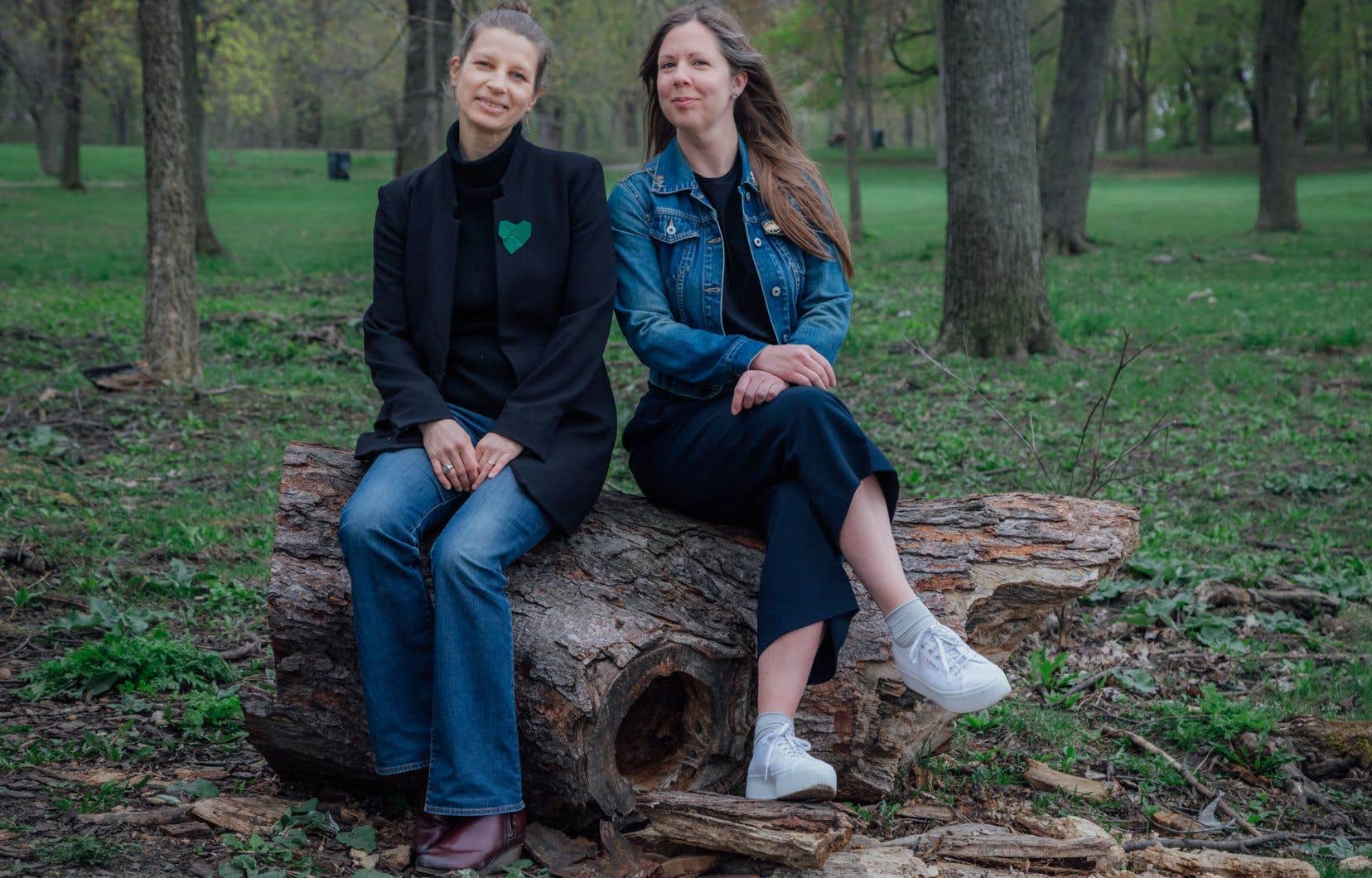The Pavillons digital platform will celebrate its second anniversary on May 25. After having been the receptacle of serials by authors of the caliber of Martine Delvaux, Marie-Sissi Labrèche, Patrick Senécal or Mélissa Verreault, this space for literary creation and dissemination – which operates according to a subscription system per project – publishes for the first time a collective collection.
Hope in my stomach. Life-size tomorrows brings together twelve unpublished texts — revealed one per month on the platform — written by as many activists from the environmental group Mothers at the Front; lucid, reassuring and committed speeches, designed for parents.
“At a time when ecoanxiety is on the verge of becoming a sort of evil of the century that is both legitimate and completely sterile, we wanted to give voice to those who act, who try, who together fight so that the concrete wall becomes green, and so that we can perhaps get through it, instead of throwing ourselves into it at full speed, with fatalism on the accelerator,” write in the introduction the co-editors of the digital collection, Kareen Guillaume and Marie Lamarre.
The idea first germinated in a classroom, when Marie Lamarre, who, in addition to being the founder and editor of Pavillons, is a DESS lecturer in publishing at the University of Sherbrooke, asked her students to imagine a collective project. In his class? Kareen Guillaume, member of Mères au front. “Kareen created what would become the genesis of Hope in my stomach. His work was very successful, and I have never forgotten it. So when the time came to try my hand at collective on Pavillons, I saw the opportunity to bring it to life. »
Breath of hope
Together, the co-editors therefore launched a call for texts to Mothers at the Front, and accepted the proposals of eleven women and one man from various backgrounds and generations in order to offer a range of points of view, angles, approaches and genres.
Even though the authors benefited from great creative and stylistic freedom, they underwent a rigorous editorial support process which ensured that their ideas were brought to their full potential and ensured uniqueness between the stories.
The master word ? Hope. “In all the texts, we find this driving force, this desire to make things happen, without making anyone feel guilty or denigrating,” explains Kareen Guillaume. We have access to another vision, which testifies to an awareness of the challenges of the world in which we live, but also to a faith in its sequel, to the echo of a field of wild flowers. These are personal stories that touch on universal beliefs. »
“Certain texts offer more direct denunciations, outlines of solutions,” adds Marie Lamarre. These are literary testimonies of this incredible energy that circulates through the movement, which, I think, can reach a wide readership, whether they have experienced parenthood or not, as long as they want to think about the future of the world and to leave something better to future generations. »
The result is as coherent as it is eclectic, moving from intimate narrative to poetry, from essay to slam and direct speaking. There is even a humorous text – which here plays with the codes of the activist guide – as well as an ecofiction “which opens with extraordinary descriptions of the Abitibi landscapes”.
Pushing back the horizon of possibilities
Even if the first text has just been revealed on the platform, the editors still have both hands immersed in the stories that will follow, thus touching on an act of creation anchored in current events and in the speaking out that follows. follows. “What is interesting with Pavillons is that the evolution of the world in which we live has a direct impact on the publishing work. I wouldn’t be surprised if future events influence the rewrite. We are stuck to reality and are not restricted by the distance that the printed book imposes,” emphasizes Marie Lamarre. Hope in my stomach is therefore a work in constant creation, inscribed in the present moment and, therefore, totally unique.
According to the latter, this form of immediacy opens up a myriad of literary possibilities, which she is only just beginning to exploit. “We want to offer writers a new model of creation and new conditions, made possible by the Web and the absence of printing. »
Over the coming years, the publisher wishes to push the boundaries of literary arts to include photography, video and audio, and thus promote the democratization of creative practice through sound and voice. She would also like to make more use of the collective, or even the connections. “With Mothers at the Front, we talked a lot about the transformation of the project Hope in my stomach, which could be reborn in a performative form, as part of a public reading tour, for example. »
After two years of work, the editor is proud of the influence of Pavillons, but notes that there is still a lot of work to do to find a readership among a public very attached to the book object. “It’s a challenge, but we’re getting there, one project at a time, one innovation at a time. There hasn’t been a burst of support, but it’s building and I see, each time there’s a slightly different proposition, that it has an effect on readers and creators, that it makes other ideas emerge and that the literary community is more and more attentive and interested in what we are doing. It’s a long-term job, but we’re holding on. »
We can’t wait to see what happens next.
